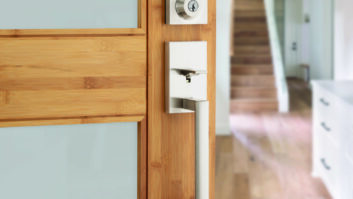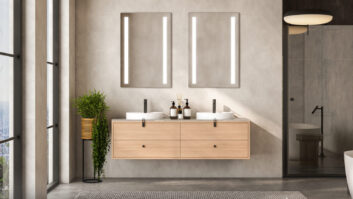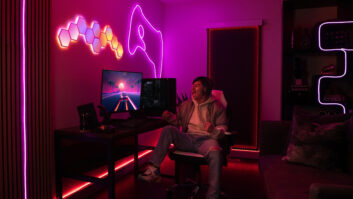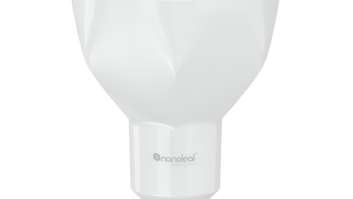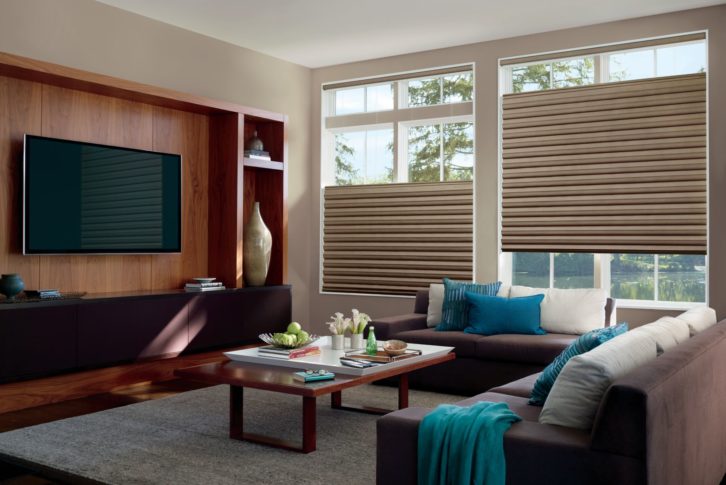 One in five Americans moved in the last year, according to the Pew Research Center, sparking an increase in home projects spanning from start-from-scratch custom builds to family home facelifts. While homeowners outfit their new spaces, they’re considering both aesthetic and technology. A synergy between the two is apt to become the biggest trend this year.
One in five Americans moved in the last year, according to the Pew Research Center, sparking an increase in home projects spanning from start-from-scratch custom builds to family home facelifts. While homeowners outfit their new spaces, they’re considering both aesthetic and technology. A synergy between the two is apt to become the biggest trend this year.

As homeowners consider how their home can support their wellness and routines and create the right environment for productivity throughout the day, energy levels, and moods, dealers have an opportunity to inject technology. Demand for the connected home has risen: the IFDA reports that homeowners are seeking design with “modern conveniences,” and “sensor-activated everything.”
As the smart home has advanced it has become increasingly design-friendly, and this new synergy is an opportunity for dealers. But to deliver the benefits homeowners expect from smart home technology, it needs to work together impeccably with the design of the home.
Lighting is at the center of design and technology synergy: It’s critical to the room’s design and it can also support circadian rhythms and routines. With a smart system, automated routines tailored to the homeowner’s lifestyle filter the light for stunning ambience or create blissfully darkened rooms. For any room in the home, especially high-traffic rooms like the bathroom or kitchen, the technology delivers on its true purpose to properly light the space and promote comfort, at all times of the day without hassle.
Creating these lighting routines requires both an automated lighting system and automated shading. Smart lighting only controls the artificial lighting, so it must be paired with smart shades that control the natural rays coming in through the windows. The integrator would cooperatively schedule both to create the complete experience in the home, and the lighting technology would be simply concealed, whether installed as part of the home’s wiring or added as a retrofit with smart lightbulbs. Automated shading can be more difficult to add in synergy with design, as many of these products are manufactured by technology companies and don’t offer the breadth of color, fabric, and style options designers are used to for ‘dumb’ shades.
When available, diverse smart shade style options also offer increased functionality for a lighting scheme. Lighting designers can also become part of the design process to consider the level of room darkening or light filtering is needed. For example, a smart room darkening shade creates the perfect environment for resting, rising with the sun after a restful night to softly invite filtered sunlight inside for a gentle wake. An automated top-down, bottom-up shade paired with smart lighting control, gives homeowners natural light in bedrooms, bathrooms, and home offices while maintaining their privacy. With scenes, smart systems can automatically provide the perfect light for early evening activities like cooking dinner or relaxing with a book.
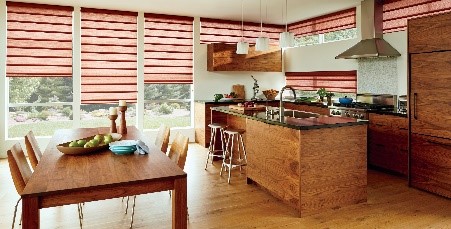 These features are maximized when there is synergy in technology capability and design options, so as not to sacrifice beauty for functionality. There are ever-expanding design options from Hunter Douglas, including over 20 styles that are completely customizable in a range of colors, fabrics, and styles.
These features are maximized when there is synergy in technology capability and design options, so as not to sacrifice beauty for functionality. There are ever-expanding design options from Hunter Douglas, including over 20 styles that are completely customizable in a range of colors, fabrics, and styles.
There’s technological synergy to consider, too, where the automated shades must work with any lighting or smart home system to create these complex lighting scenes. When the full home’s lighting control technology is synergistic, designers and dealers can deliver. With the growing number of smart technology applications in the home, there is opportunity for dealers to offer a wider range of systems to their existing clients and the market of new homeowners.
About The Author
Scott Stephenson is a veteran of the home automation and smart home space, bringing over 14 years of experience in product design to bring solutions that delight both end-users and professionals. Joining Hunter Douglas in 2017, Scott manages the product and integration strategy for all automated shading solutions. Prior to joining the Hunter Douglas team, Scott spent seven years at leading global smart home provider Control4 as a senior product manager for their lighting and comfort products, where he managed both their award-winning lighting control solutions as well as all shade integration.
Scott holds an electrical engineering degree from Duke University, an MBA from The University of North Carolina, and was named one of the “Young Turks of CE” by Technology Integrator Magazine.
See also: Planning For Profits With 2021’s Smart Home Trends





